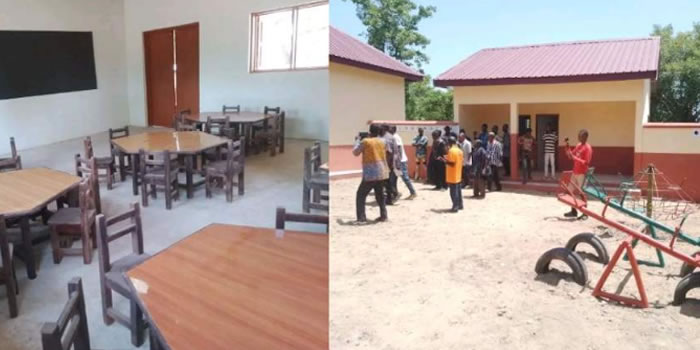

Population
The population of the district for 2005 was estimated at 66358 with an annual growth rate of 1.7% by the 2000 PHC. Thus, the district’s population growth rate is lower than the national growth rate of 2.6%.
Sex/Age structure
The district’s population structure has a low sex ratio of 100 males to 103 females. The population is youthful comprising 47% (between 0-14 years), 49% between 15-64 years and 4% over 60 years old.
In-migration
The soil fertility in the district has attracted migrant farmers and Fulani herdsmen from the near by districts of Nadowli and Jirapa/Lambussie into the district. This has increased land cultivation and at the same time the destruction of farmlands by Fulani herdsmen has brought about frequent disputes and environmental degradation.
Spatial analysis
Human settlement is highly dispersed and is typical rural. Forty percent of the population, that is 25 settlements, is concentrated at the northeastern part of the district occupying about 10 percent of the landmass of the district. Houses are scattered in compounds with average household size of 8 persons. Each compound consists of a number of family units who are normally related by blood or decent. Houses are normally built with mud bricks and roofed with thatch. The table shows settlements with populations above 2000 in the district
Location and distribution of services and facilities
The uneven distribution of the district population partly explains the over concentration of social and economic infrastructure in the north –east part of the district. The distribution of services and facilities in the district are woefully inadequate and skewed towards the capital, funsi and the major settlements in the district namely, Funsi, Baayiri, Kundugu, Loggu, Bulenga, Kulkpong, Goripie, Manwe, Duccie, Yaala, Buffiama. The major settlements are concentrated at the southeastern part of the district and close to Wa municipal.
Hierarchy and Distribution of Settlements.
To understand the existing hierarchy of settlement, the scalogram technique was employed. By this, the settlements were ranked based on the population, and the number of services they offer. In delineating the settlements into the various hierarchies, the following criteria were used.
1st Order Settlement: Settlements with centrality indices above 80% of the total centrality of 2606.8
2nd Order settlement: Settlements with centrality indices between 60 and 79% of the total Centrality of 2606.
3rd Order settlement: Settlements with centrality indices between 40 and 59% of the total Centrality of 2606.8.
4th Order settlement: Settlements with centrality indices below 20 and 39 % of the total Centrality of 2606.8.
5th Order settlement: Settlements with centrality indices below 20 % of the total Centrality of 2606.8
From the above analysis, the district has only two levels, 4th Order and 5th Order settlements. The District capital, Funsi, is the only settlement within the 4th Order while the rest of the settlements are in the 5th Order. This implies that the facilities in the district are not only inadequate but also inequitably distributed. As such efforts should be made to improve the situation to avoid migration to the higher order settlement.
The absence of certain facilities such as electricity, Small Town Water Supply System (STWSS), hospital, major financial institutions among others placed the district capital in the 4th Order. Thus, only 4900 persons enjoy the 4th Order services while the rest of the population enjoys the 5th order. However, some sections of the population enjoys the 4th Order services though they are outside it. In the near future, Funsi will move to 3rd order when these same facilities are provided.
Date Created : 11/17/2017 4:53:29 AM










 facebook
facebook
 twitter
twitter
 Youtube
Youtube
 +233 593 831 280
+233 593 831 280 0800 430 430
0800 430 430 GPS: GE-231-4383
GPS: GE-231-4383 info@ghanadistricts.com
info@ghanadistricts.com Box GP1044, Accra, Ghana
Box GP1044, Accra, Ghana